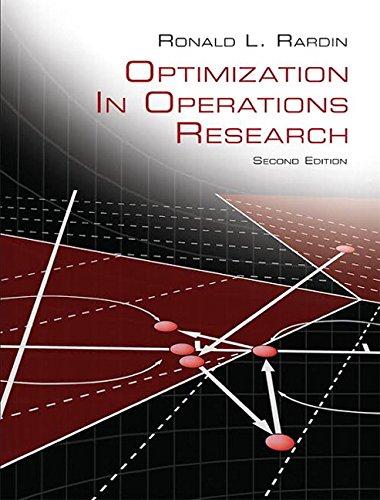A small engineering consulting firm13 is establishing its plan for the next year. The director and the
Question:
A small engineering consulting firm13 is establishing its plan for the next year. The director and the three partners are to meet to decide which projects to pursue.
Preliminary research has been done on eight projects. The expected profit for each project is given in the following table together with the number of person-days of background preparation each will require and the computer processing unit (CPU) time (in hours) each will use.
Project Profit Person-Days CPU 1 2.1 550 200 2 0.5 400 150 3 3.0 300 400 4 2.0 350 450 5 1.0 450 300 6 1.5 500 150 7 0.6 350 200 8 1.8 200 600 Excluding downtime, it is estimated that 1000 CPU hours will be available through the year. Presently there are 10 engineers (including the director and the partners); each works 240 days per year. At most three engineers could be let go, and management does not want to hire any new engineers for next year, due to market uncertainties. A minimum of 3 projects need to be selected, so each partner will be in charge of at least one project for the year. The director has four favorite projects (3, 4, 5, and 8), and the company needs to select at least one of these.
The firm wishes to formulate an optimization model to determine which projects to undertake, assuming that projects must be selected on an allor-
nothing basis.
(a) Justify why appropriate decision variables for the model are 1j = 1,c, 82.
xi! e 1 if project j is selected 0 otherwise
(b) Assign suitable symbolic names to the constants in the foregoing table.
(c) Formulate an objective function to maximize total profit from projects selected.
(d) Formulate a pair of constraints to enforce the minimum and maximum engineer person-days available with different numbers laid off.
(e) Formulate 3 constraints to enforce the limit on computer time, meet the requirement to select at least three projects, and include at least one of the director’s favorites.
(f) Complete your model with an appropriate system of variable-type constraints.
(g) Is your model best classified as an LP, an NLP, an ILP, or an INLP, and is it singleor multiobjective? Explain.
(h) Enter and solve your model with class optimization software.
Step by Step Answer:






